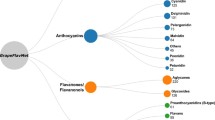Abstract
Flavonols are a class of phenolic compounds derived from plant secondary metabolism. In wine, these flavonoid compounds do not receive enough attention as other polyphenols such as anthocyanins and tannins; however, as its properties and structures are better understood, its importance for wine quality becomes more apparent. These compounds are involved in the copigmentation phenomena, enhancing the color intensity of younger red wines, and may also contribute to wine astringency. In addition, flavonols possess antioxidant activity and positive health benefits. High performance liquid chromatography, particularly tandem mass spectrometry, is a significant tool in the structural elucidation and quantitation of flavonoid derivatives. Thus, here we describe the methodology to be used for carrying out the flavanol analysis from grapes and wine by high performance liquid chromatography coupled to a diode array detector in tandem with electrospray ionization mass spectrometry (HPLC-DAD-ESI-MS/MS).
Access this chapter
Tax calculation will be finalised at checkout
Purchases are for personal use only
Similar content being viewed by others
References
Price SF, Breen PJ, Valladao M et al (1995) Cluster sun exposure and quercetin in Pinot noir grapes and wine. Am J Enol Vitic 46:187–194
Garrido J, Borges F (2013) Wine and grape polyphenols – a chemical perspective. Food Res Int 54:1844–1858
Castillo-Muñoz N, Gómez-Alonso S, García-Romero E et al (2007) Flavonol profiles of Vitis vinifera red grapes and their single-cultivar wines. J Agric Food Chem 55:992–1002
Favre G, González-Neves G, Piccardo D et al (2018) New acylated flavonols identified in Vitis vinifera grapes and wines. Food Res Int 112:98–107
Mattivi F, Guzzon R, Vrhovsek U et al (2006) Metabolite profiling of grape: flavonols and anthocyanins. J Agric Food Chem 54:7692–7702
De Beer D, Joubert E, Gelderblom WCA et al (2005) Antioxidant activity of South African red and white cultivar wines and selected phenolic compounds: in vitro inhibition of microsomal lipid peroxidation. Food Chem 90:569–577
Shahidi F, Ambigaipalan P (2015) Phenolics and polyphenolics in foods, beverages and spices: antioxidant activity and health effects – a review. J Funct Foods 18:820–897
Ritchey JG, Waterhouse AL (1999) A standard red wine: monomeric phenolic analysis of commercial cabernet sauvignon wines. Am J Enol Vitic 50:91–100
Haselgrove L, Botting D, van Heeswijck R et al (2000) Canopy microclimate and berry composition: the effect of bunch exposure on the phenolic composition of Vitis vinifera L cv. Shiraz grape berries. Aust J Grape Wine Res 6:141–149
Trouillas P, Sancho-Garcia JC, De Freitas V et al (2016) Stabilizing and modulating color by copigmentation: insights from theory and experiment. Chem Rev 116:4937–4982
Ferrer-Gallego R, Brás NF, García-Estévez I et al (2016) Effect of flavonols on wine astringency and their interaction with human saliva. Food Chem 209:358–364
Naczk M, Shahidi F (2006) Phenolics in cereals, fruits and vegetables: occurrence, extraction and analysis. J Pharm Biomed Anal 41:1523–1542
Everette JD, Bryant QM, Green AM et al (2010) Thorough study of reactivity of various compound classes toward the Folin-Ciocalteu reagent. J Agric Food Chem 58:8139–8144
Khoddami A, Wilkes MA, Roberts TH (2013) Techniques for analysis of plant phenolic compounds. Molecules 18:2328–2375
Naczk M, Shahidi F (2004) Extraction and analysis of phenolics in food. J Chromatogr A 1054:95–111
Pérez-Navarro J, Izquierdo-Cañas PM, Mena-Morales A et al (2019) Phenolic compounds profile of different berry parts from novel Vitis vinifera L. red grape genotypes and Tempranillo using HPLC-DAD-ESI-MS/MS: a varietal differentiation tool. Food Chem 295:350–360
Perestrelo R, Bordiga M, Locatelli M et al (2020) Polyphenols, biogenic amines and amino acids patterns in Verdelho wines according to vintage. Microchem J 153:104383
Gómez-Plaza E, Gil-Muñoz R, Lopez-Roca JM et al (2001) Phenolic compounds and color stability of red wines: effect of skin maceration time. Am J Enol Vitic 52:266–270
Ivanova-Petropulos V, Hermosín-Gutiérrez I, Boros B et al (2015) Phenolic compounds and antioxidant activity of Macedonian red wines. J Food Compos Anal 41:1–14
Fabre N, Rustan I, De Hoffmann E et al (2001) Determination of flavone, flavonol, and flavanone aglycones by negative ion liquid chromatography electrospray ion trap mass spectrometry. J Am Soc Mass Spectrom 12:707–715
La Barbera G, Capriotti AL, Cavaliere C et al (2017) Liquid chromatography-high resolution mass spectrometry for the analysis of phytochemicals in vegetal-derived food and beverages. Food Res Int 100:28–52
Parejo I, Jáuregui O, Viladomat F et al (2004) Characterization of acylated flavonoid-O-glycosides and methoxylated flavonoids from Tagetes maxima by liquid chromatography coupled to electrospray ionization tandem mass spectrometry. Rapid Commun Mass Spectrom 18:2801–2810
Pérez-Navarro J, Izquierdo-Cañas PM, Mena-Morales A et al (2021) Genotypic variation in phenolic composition of novel white grape genotypes (Vitis vinifera L.). J Food Compos Anal 102:103987
Pérez-Navarro J, Izquierdo-Cañas PM, Mena-Morales A et al (2020) Comprehensive chemical and sensory assessment of wines made from white grapes of Vitis vinifera cultivars Albillo Dorado and Montonera del Casar: a comparative study with Airén. Foods 9:1282
Pérez-Navarro J, Izquierdo-Cañas PM, Mena-Morales A et al (2019) First chemical and sensory characterization of Moribel and Tinto Fragoso wines using HPLC-DAD-ESI-MS/MS, GC-MS, and Nap**® techniques: comparison with Tempranillo. J Sci Food Agric 99:2108–2123
Author information
Authors and Affiliations
Corresponding author
Editor information
Editors and Affiliations
Rights and permissions
Copyright information
© 2023 The Author(s), under exclusive license to Springer Science+Business Media, LLC, part of Springer Nature
About this chapter
Cite this chapter
Gómez-Alonso, S., Paniagua-Martínez, T., Pérez-Navarro, J. (2023). Flavonol Identification and Quantitation by High Performance Liquid Chromatography Coupled with Mass Spectrometry (HPLC-MSn). In: Machado de Castilhos, M.B. (eds) Basic Protocols in Enology and Winemaking. Methods and Protocols in Food Science . Humana, New York, NY. https://doi.org/10.1007/978-1-0716-3088-4_7
Download citation
DOI: https://doi.org/10.1007/978-1-0716-3088-4_7
Published:
Publisher Name: Humana, New York, NY
Print ISBN: 978-1-0716-3087-7
Online ISBN: 978-1-0716-3088-4
eBook Packages: Springer Protocols




